Miliaria is a specific form of dermatitis that occurs as a result of skin irritation due to excessive sweating.
Miliaria occurs as a result of increased temperature (both the environment and the body itself), as well as due to violations of hygiene rules, which disrupts the functioning of the skin glands - sweat and sebaceous, which causes a skin response.
Most often, newborns and young children suffer from heat rash, since their skin is very thin, delicate and sensitive, but adults who have metabolic problems, are overweight and violate hygiene standards, preferring tight and non-breathable clothing, can also suffer.
Causes
Miliaria mainly affects areas of the skin with insufficient ventilation:
- areas of natural folds of the body (armpits, groin area, knee and elbow bends),
- the area under the mammary glands in women and very obese men,
- the area behind the ears in children and adults with thick hair,
- the area between the thighs, if the legs are very full,
- the area that is constantly under clothing (the area under a bra, swimming trunks, diapers), bandages, bandages.
Contribute to the development of prickly heat:
- synthetic clothing, dense non-breathable fabrics,
- feverish conditions,
- elevated air temperatures combined with high humidity,
- skin injuries and chafing,
- the use of creams, oils, fatty cosmetic bases that clog pores,
- diabetes, metabolic diseases, excess weight.
Development mechanism
An increase in body temperature leads to the activation of protective mechanisms for cooling it - the pores open and sweat appears, which cools the body.
If the sweat glands are clogged with sebum, cosmetics, or if the air is humid and hot, then the sweating process suffers. Sweat evaporates slowly, causing skin irritation.
Sweat contains salts and biologically active substances that can have an irritating effect on the skin. If excess sweat is not removed in a timely manner, the microbes that are always there begin to actively multiply on the skin - the process of inflammation of the sweat glands occurs - prickly heat, a small rash, is formed, accompanied by various subjective unpleasant symptoms.
There are three different clinical subtypes of miliaria:
- papular miliaria,
- prickly heat,
- crystal prickly heat.
Symptoms of prickly heat
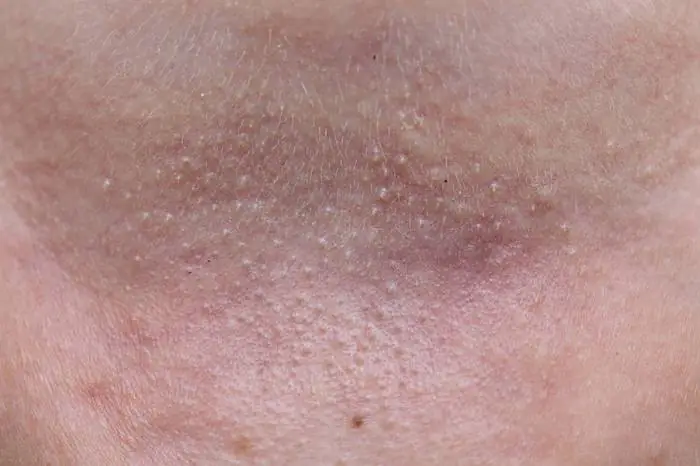

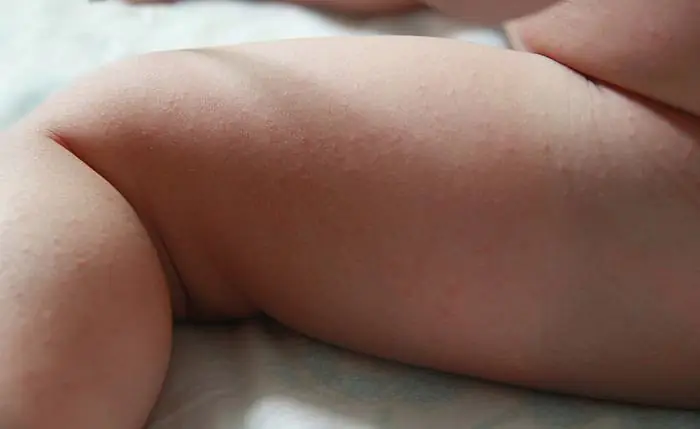
Papular miliaria
This form occurs more often in adults in hot summers and high humidity.
With the papular form of miliaria, rashes appear on the skin in the form of small, flesh-colored blisters, which average 1-2 mm.
Typically, blisters appear on the sides of the chest and abdomen, on the arms or legs.
In addition to the manifestations of prickly heat, peeling and severe dryness of the skin are characteristic, causing itching and discomfort.
Miliaria rubra
With the red form of prickly heat, nodules and blisters up to 2 mm in diameter appear, filled with cloudy contents, surrounded by a halo of redness.
The blisters do not merge into a single field and are very itchy, especially when sweating increases and the temperature of the skin and air rises.
This type of prickly heat manifests itself especially strongly in places of friction - between the buttocks, under the diaper, under the breasts of women, between the thighs. This type of heat rash also occurs more often in adults.
Crystal prickly heat
The crystalline form of miliaria usually occurs in children.
These are white or translucent blisters no more than 1 mm in size, the blisters tend to merge and form larger zones, they can burst and dry out, forming crusts and peeling, easily become infected, and give rise to the development of pyoderma (pustules on the skin). They occur in the forehead and face area, on the neck and torso, and can be on the shoulders and back.
Miliaria can cause severe itching and swelling of the skin, especially in children, mimicking many other diseases.
The prickly heat rash can easily be confused with skin manifestations of infectious or allergic diseases (measles, chickenpox, urticaria)
Due to the tenderness of the skin and weak immunity, prickly heat in children is often complicated by the addition of a secondary infection, progresses quickly and leads to weeping and diaper rash.
Diagnostic methods
Typically, the diagnosis in typical cases is not difficult and is established based on the results of examination and complaints.
The skin is moist, sweaty, with areas of redness and pimples. The diagnosis is made by a pediatrician or therapist. In complicated cases, consultation with dermatologists is necessary.
Treatment of heat rash
The basis for the treatment of prickly heat in both children and adults is access of air to the skin and hygiene.
You should not wrap your child up, dress him too warmly, or wear things that increase sweating.
Avoid wearing synthetic or tight clothing in hot, humid climates and excessive use of soap.
- If there are rashes, drying measures are necessary - bathing in herbs (chamomile, oak bark), treating the skin with cotton swabs with herbs.
- When sweating in the area of natural folds, powders help - baneocin, talc, potato starch.
- When miliaria infection occurs, the skin is treated with a slightly pink solution of manganese. Dermaveit products, an emulsion with zinc oxide, help - they relieve itching and redness.
- Treating the affected areas of the skin with an antiseptic solution (for example, an alcohol solution of salicylic acid).
- To reduce itching in adults, apply topical ointments with betamethasone 2 times a day for 3 days, as well as preparations containing menthol and camphor.
- For bacterial infection, take antimicrobial drugs.
For heat rash, creams, oils and greasy lotions are prohibited; they will only worsen the situation.
If severe sweating occurs in adults, it is necessary to consult a doctor and treat the manifestations of hyperhidrosis (excessive sweating).
Physical activity in hot rooms and wearing warm clothes should be avoided.
Slow acclimatization to hot climates is recommended.
Prognosis and prevention
The prognosis for prickly heat is favorable; if the cause is eliminated, it goes away in 1-2 days.
The basis of prevention is wearing loose clothing and breathable underwear, body hygiene with regular showering.
For children, the basis of prevention is daily hygienic and air baths, wearing light clothing, and in the heat, avoiding swaddling and diapers.
Medical expert article
Among dermatological problems, prickly heat in children from the first days of birth until the age of two or three occupies one of the main places in parents' appeals to pediatricians.
Miliaria refers to diseases of the skin appendages - small sweat (eccrine) glands located throughout the body.
[1], [2], [3]
ICD-10 code
Epidemiology
Domestic clinical statistics of childhood miliaria are unknown. But, according to the American Academy of Family Physicians, this skin pathology affects up to 40% of infants and usually appears during the first months of life. In 3-4.5% of cases, the so-called crystalline prickly heat is diagnosed by pediatricians in newborns aged 7-10 days. This subtype or type of disease is the most common.
Also, some studies note that prickly heat in a newborn baby most often appears with high birth weight, as well as in infants born prematurely or by cesarean section.
[4], [5], [6], [7], [8], [9]
Causes of heat rash in a child
The main causes of heat rash in children are considered to be overheating - due to hot weather and heat, as well as due to errors in caring for children, in particular when they are dressed too warmly or swaddled tightly. This often causes skin problems such as prickly heat and diaper rash in children.
As a result, the production of sweat by the eccrine glands increases, although its release to the surface of the epidermis and natural evaporation are difficult. Thus, conditions arise for partial obstruction of the excretory pores of the sweat glands.
Miliaria often appears after a child has a fever, when hyperhidrosis during fever is caused by one or another acute infection.
This skin lesion is more often observed in hot weather, but excessive insulation and the “greenhouse effect” created by clothing lead to the fact that prickly heat may appear in a child in winter.
[10], [11], [12]
Risk factors
Pediatricians see unconditional risk factors for the occurrence of prickly heat:
- in high air temperatures - indoors or outside during the hot season, especially in combination with high humidity levels;
- in clothes and bedding made of synthetic airtight fabrics that do not absorb sweat and block skin gas exchange;
- in excessive treatment of the skin in the warm season with oils or fat-based creams that do not allow air to pass through, which leads to clogging of the sweat pores on its surface;
- in the child's excess weight and a large number of deep skin folds, the skin in which constantly sweats without timely evaporation of the sweat released.
[13], [14], [15], [16]
Pathogenesis
To reduce body temperature when it overheats, small children, like adults, sweat. But why does prickly heat appear so often in early childhood?
To a large extent, the pathogenesis of childhood heat rash is determined by the thermoregulatory system of the body of children from birth to one and a half to two years that is not fully formed and adapted to environmental conditions. The role of the physiological characteristics of their skin is also great: a loose stratum corneum of the dermis, the absence of a complete hydrolipid (water-fat) and acid mantle of the skin, which are insufficient to protect the skin.
When miliaria develops, the eccrine sweat glands (which are tube-shaped) located in the skin throughout the body and their incompletely developed excretory ducts that open in the superficial pores of the skin become blocked.
According to experts, the conditionally pathogenic bacterium Staphylococcus epidermidis, which lives on healthy skin (that is, being part of the skin microbiota), is involved in the development of infant heat rash, especially heat rash in infants. It is believed that the film-forming substance produced by this microorganism closes the excretory pores. And the release of accumulated sweat directly through the walls of the glands is manifested by rashes on the skin and its irritation.
By the way, another type of sweat glands - apocrine (lying deeper than eccrine and localized in the armpits, in the perineum and groin, in the pubic and navel areas) - completes development in childhood, and “turns on” with the onset of puberty. Their excretory ducts open, like those of the sebaceous glands, into the hair follicles.
[17], [18], [19], [20], [21], [22], [23]
Symptoms of heat rash in a child
The first signs of prickly heat are skin rashes. And what prickly heat looks like in children depends on its type.
Miliaria crystalline manifests itself as vesicles - small transparent bubbles filled with liquid; At the same time, the skin does not turn red, and the rash does not cause itching or other unpleasant sensations. Each vesicle develops until spontaneous perforation, followed by drying and desquamation. How long does it take for prickly heat in children? Crystalline prickly heat usually resolves on its own (the scales slough off within a few days), but – when exposure to the causative factors continues – the rash may reappear.
If prickly heat is localized on the child’s head and forehead, appears on the neck (in the folds, behind the ears, along the hairline) or on the body - on the back, on the stomach, and also appears on the arms (in the bends of the elbow joints and in the forearms) ) and on the legs (in the bends of the knee joints), then in 85-92% of cases this is a crystalline type of pathology. See also - Miliaria in a newborn on the face and neck
With prickly heat, the child’s skin first becomes covered with itchy red-pink spots, on which reddish nodules form within just a few hours. They last for several days, often transforming into pustules, which is why a parallel name appeared in dermatology - “pustular miliaria”. Places of her rashes: the bends of the limbs, the scalp and neck; This type of heat rash often occurs in children under the armpits.
Miliaria rubra may also appear on the feet (between the toes and on the arch of the feet), in the groin and on the buttocks, that is, on the butt. The area of the rash can be quite extensive, maceration of the epidermis often occurs; Itchy skin irritates the child, which affects his behavior, sleep and feeding.
If prickly heat occurs, the rash in the form of pink or red spots and bright papules of varying sizes spreads throughout the body, but is more concentrated in the neck and back; Fever, general malaise, itching and skin irritation are noted.
[24], [25]
Forms
Types of prickly heat distinguished by dermatologists:
- crystalline (miliaria crystallina) – superficial, most often diagnosed;
- red (miliaria rubra) – deeper, more common in newborns, usually developing between the first and third weeks of a baby’s life;
- deep (miliaria profunda) is the rarest, as it mainly affects adults living in tropical climates. Moreover, it is the most serious, since it is caused by complete obstruction of the apical sections of the eccrine gland tubes; is often a complication of repeatedly recurring prickly heat.
[26], [27], [28]
Complications and consequences
If care for skin with prickly heat is not of sufficient quality, or the child scratches the itchy areas, then consequences and complications - in the form of bacterial or fungal infection of damaged skin - will not take long to appear. First of all, the above-mentioned epidermal staphylococcus is activated, which is low-virulent in favorable conditions and quite aggressive in case of any damage to the surface layers of the skin.
Most often, advanced miliaria is complicated by staphylococcal or streptococcal pyoderma - pustular inflammation, as well as periporitis - an inflammatory process directly in the pores of the eccrine sweat glands.
Miliaria profunda after prolonged overheating, which caused the child to sweat heavily, can lead to heat stroke: with fever, flushing and dry skin, vomiting, weakness, rapid shallow breathing and even loss of consciousness. But this can only happen as a last resort.
[29], [30], [31], [32], [33], [34]
Diagnosis of heat rash in a child
At first glance, diagnosing prickly heat in a child does not cause any particular difficulties, and it is usually carried out by a local pediatrician, carefully examining the child, recording and analyzing the nature and localization of rashes on the skin.
But there are a lot of diseases that have similar symptoms, and a child may have a rash similar to prickly heat due to chickenpox, rubella or measles.
[35], [36], [37], [38], [39], [40], [41], [42]
Differential diagnosis
Therefore, differential diagnosis must accurately determine what skin problem actually arises: pemphigus of the newborn, atopic dermatitis, diaper erythema, allergies or miliaria in a child.
Who to contact?
Treatment of heat rash in a child
Miliaria in children is treated at home, and the key therapeutic method is to avoid exposure to heat on the child’s skin (which reduces the intensity of sweat production) and proper skin care. As a rule, there is no need for drug treatment.
However, parents often ask the same question: how to smear a child’s prickly heat? Doctors strongly recommend not to smear anything on the rash right away! First of all, the treatment of prickly heat in children includes bathing the child in water with the addition of a weak (pale pink) solution of potassium permanganate and then thoroughly drying the skin (the moisture should not be wiped off, but should be blotted carefully). Air baths will help to achieve the absolute dryness of the skin necessary to get rid of prickly heat: the child should be without clothes for several minutes.
Skin folds, redness and rashes are powdered with baby powder; Also acceptable antiseptics for prickly heat in children: 0.5-1% ethyl solution of boric acid (boric alcohol), 1% solution of salicylic acid (salicylic alcohol), solution of furatsilin.
It is important to use any ointment or cream for prickly heat in children with caution: fat-based products (most often Vaseline) clog pores and only aggravate the situation.
To relieve skin redness (if there is no maceration), D-Panthenol and Bepanten creams (with D-panthenol) or Pantestin gel (which also contains miramistin) can be used.
When prickly heat itches in a child older than one month, the antihistamine Dimetindene (Fenistil) used for allergic dermatitis and urticaria in the form of a gel, which is applied to the problem area two to three times a day, can be used exclusively as prescribed by a doctor.
If the symptoms persist for more than a few days and the skin becomes wet, then an antiseptic and drying suspension with zinc oxide - Tsindol - can be used (by applying to the affected areas). This is a better remedy than regular (vaseline-based) zinc ointment. It is more advisable to use zinc ointment with white paraffin (it is available in tubes, not in jars).
Judging by the presence of the item “rashes of various etiologies” in the list of indications for use, Calamine lotion can be used to relieve itching and irritation of the skin, disinfect and dry rashes. In addition to zinc oxide and the zinc-containing mineral calamite, this product (declared as a children's lotion that soothes the skin) contains a powerful bactericidal substance - phenol, used to treat purulent skin diseases, penetrates through the skin into the blood and... is contraindicated for children.
Antibacterial agents for external use - Levomekol or Cortomycetin, as well as the liniment of syntomycin with the antibiotic chloramphenicol - are prescribed by the doctor when prickly heat in a child does not go away due to inflammation of the skin that occurs when it is infected.
If the situation continues to become complicated, then it may come down to topical corticosteroids to relieve inflammation and itching. However, the serious side effects of most of these drugs are well known to many. And if Advantan cream has been recommended to someone, then you need to keep in mind the following: according to the instructions, this product with methylprednisolone aceponate (a synthetic analogue of prednisolone) can be used for dermatitis, neurodermatitis, eczema, psoriasis, etc. from 4 months of age (and for the drug in the form of an emulsion, there are no age restrictions at all). But methylprednisolone is contraindicated in children under 12 years of age.
Glucocorticosteroids are absorbed by children's skin and enter the blood, increasing the undesirable systemic effect of synthetic hormones of the adrenal cortex. In addition, the use of such drugs in children unless absolutely necessary causes dermatosis and atrophy of the epidermis.
Traditional treatment
The folk treatment of prickly heat, which has long become a classic, is herbal treatment, that is, bathing the child in water, adding to it decoctions of medicinal plants: chamomile flowers and calendula officinalis, plantain leaves, tripartite herb, cinquefoil erecta or lovage, as well as seeds coriander sativum.
Rinsing the skin or lukewarm lotions with a decoction of oak bark, elecampane roots, horsetail herb or cudweed will help with its anti-inflammatory and astringent effect.
For the same purpose, you can use natural apple cider vinegar diluted with boiled water (1:1) - spraying the resulting solution onto the skin and allowing the moisture to dry completely.
To relieve itching and prevent inflammation, it is recommended to treat the area of prickly heat with a soda solution (one teaspoon per glass of warm water) or fresh aloe juice diluted in half with water.
[43], [44], [45], [46]
The baby's delicate, sensitive skin is highly susceptible to external irritants. Soaked diapers, stifling heat and humidity, and a large amount of clothing threaten the occurrence of such an ailment as prickly heat. Young mothers may confuse such rashes with an allergic reaction or infection and not receive timely medical care. To quickly relieve the baby from unpleasant sensations, it is necessary to identify the causes of the rashes and determine how to treat prickly heat in children.
Varieties of the disease
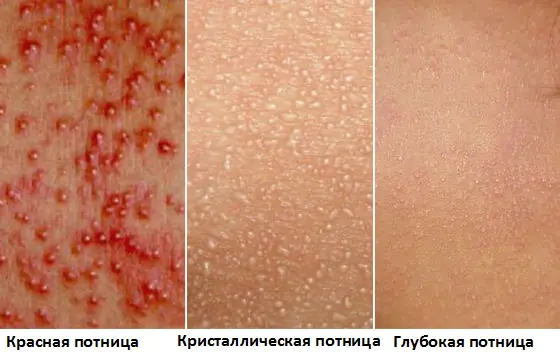
Miliaria is a non-infectious disease that usually occurs in the summer heat. But it can also appear in cold weather due to excessive wrapping of the baby. Sweat glands in babies are not yet perfect; they will finally develop at about 5 years of age. This makes natural thermoregulation difficult. As sweating increases, the glands become clogged, leading to irritation.
Let's analyze the signs of the disease depending on its type:
Miliaria rubra
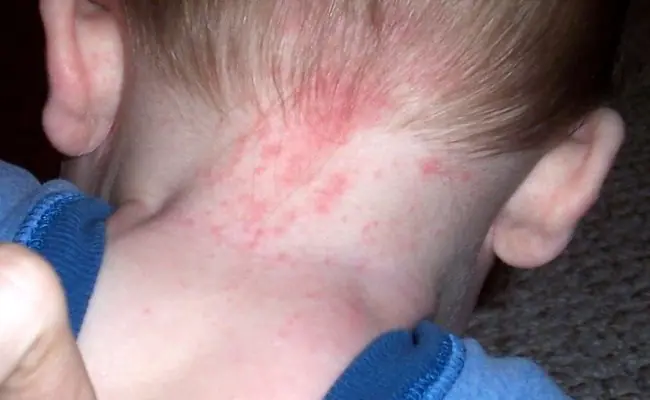
Separate nodules and blisters do not create large foci of inflammation. It is usually localized in the folds of the skin - in the groin and collar area, under the armpits. The rash disturbs the child with severe itching and pain on contact. Symptoms of prickly heat in children here disappear within 7–14 days.
Papular miliaria
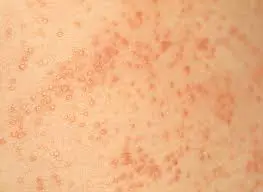
Small flesh-colored bubbles appear on the dry epidermis. A similar prickly heat is localized in a child’s arms, legs, and body. It appears several hours after the child sweats. After some time, the symptoms disappear without a trace.
Miliaria profuse
Yellowish bubbles appear in the place affected by the negative factor. Most often, such prickly heat appears in children on the face, back, neck, butt, groin area, arms and legs. In this case, the rash can appear on several areas of the skin at once. This is another manifestation of a disease that appears and disappears very abruptly. In most cases, it indicates that the temperature in the room is unfavorable for the baby. Sometimes you just need to change it; no treatment is required.
Crystal prickly heat
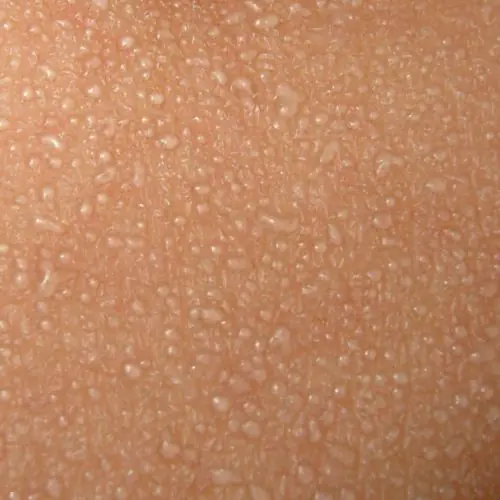
Small silvery or whitish blisters form large affected areas. They open up easily and in their place appear areas with flaky skin. This type of prickly heat occurs on the child’s neck, face and body. The rash associated with this heat rash in children does not bother the baby with itching or pain and goes away after a couple of days.
What can cause heat rash in a child

In most cases, the disease manifests itself in places where air almost does not penetrate. Tightness during swaddling and too warm clothes in the summer lead to overheating of the baby. Sweat accumulates and causes an irritable reaction.
But there are other reasons why prickly heat appears in a child:
- Stuffy and damp nursery;
- Lack of regular water procedures and air baths;
- The use of fatty creams that interfere with skin breathing;
- Excessive sweating (if the temperature rises during illness);
- Clothes that are too tight or warm.
Most often, prickly heat occurs in weak, premature babies, diabetics or those who are obese. But no one is immune from this disease: severe heat rash can occur even in a healthy newborn or older child.
Reasons for the appearance of rashes in different places of the body: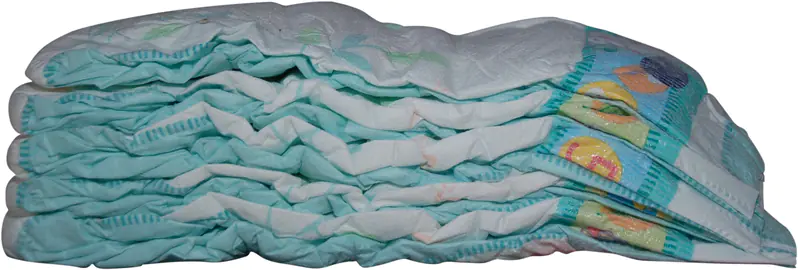
- Rash on the inner sides of the arms and legs. This phenomenon occurs due to restlessness and excessive tearfulness of the baby, since with nervousness the palms and feet sweat very much.
- Heat rash on the abdomen and chest of a baby is often due to low-quality clothing and poorly selected temperature conditions in the room. The same reasons explain prickly heat on the back of a child.
- Heat rash in the groin and bottom of a child occurs due to parents ignoring hygiene rules and due to poor-quality diapers. This condition is also called diaper dermatitis.
- Miliaria appears on the face and neck in the summer, when it becomes too hot.
- Prickly heat on a child’s head is localized due to constant wearing of a hat or cap.
- Miliaria in the armpits is associated with excessive sweating of the child. Overweight children suffer the most.
With timely measures taken, the child quickly recovers from prickly heat, unlike an allergy or infection.
A characteristic symptom of the disease is always a rash with skin hyperpigmentation. In infants, additional signs include trouble sleeping and restlessness. It is easy to confuse the heat rash with chicken pox or measles; allergic urticaria is very similar to it. Therefore, before trying to cure prickly heat, it is better to get medical advice.
If the baby suffers from severe itching, pain and fever, there is swelling of the tissues, ulcers and ulcers are noticeable on the skin - you need to call the emergency room.
How to get rid of prickly heat: treatment methods

What to do if your baby has heat rash? Symptoms and treatment are undoubtedly related. But first of all, it is necessary to identify the causes that provoked the disease and eliminate them. So, if it is too hot in the nursery, you should make sure that the air is heated to no more than 22 degrees. Do not use synthetic fabrics for dressing and bedding children. The child needs to have air baths more often without diapers.
Mom needs to stop being afraid that the newborn will certainly catch a cold without a hot blanket or an excessively warm jacket. In order not to provoke heat rash in an infant, it is worth replacing fatty creams and oils with baby talc.
Getting rid of the disease at home:
- You can add herbal infusions or a weak solution of potassium permanganate to baby baths. Seedlings, calendula, oak bark, yarrow, bay leaf, and chamomile (50 grams per 1 liter) are suitable. This will help disinfect and dry the skin. Healing plants can be added to water either separately or together.
- After washing, the toddler’s skin must be thoroughly blotted and sprinkled with special talcum powder. It is good if the powder contains anesthesin, which has a cooling effect, and panthenol for healing ulcers.
- Water-salt lotions or baths have a good antipruritic effect. That is, a little sea salt is added to the water.
Holidays at sea are also useful for children. Babies as young as six months old can conquer the sea waves.
Treating prickly heat with creams and ointments
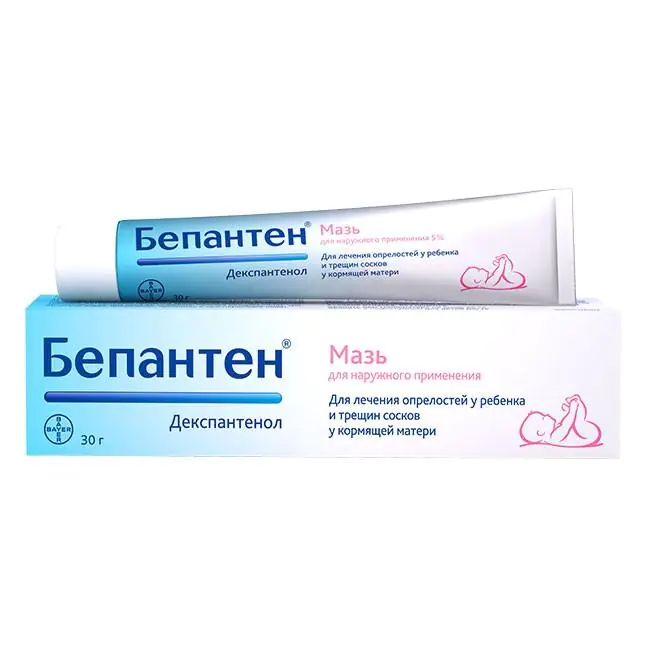
Special emulsions that have antipruritic and wound-healing effects will help relieve the baby from unpleasant sensations. When choosing them, be sure to refer to the instructions for use. After all, some products are not recommended for babies under one year old.
What drugs are most often prescribed against this disease:
- Bepanten ointment;
- Zinc ointment;
- Nystatin;
- Weleda.
Creams
- Sudocrem
- Mustela
- Emolium
- Desitin
Many parents are concerned about whether it is possible to lubricate pimples with brilliant green. This is undesirable, because the drug only disinfects and dries out pimples, but does not cure the disease itself. You can use brilliant green if there are no other pharmaceuticals.
Now pharmacists have developed quite a lot of remedies against the unpleasant symptoms of the disease, which are well tolerated by children. Thanks to them, the child will quickly get rid of itching and pain. But the use of any pharmaceutical drugs requires medical advice - even the most harmless drugs have contraindications.
How to cure a disease using traditional medicine?
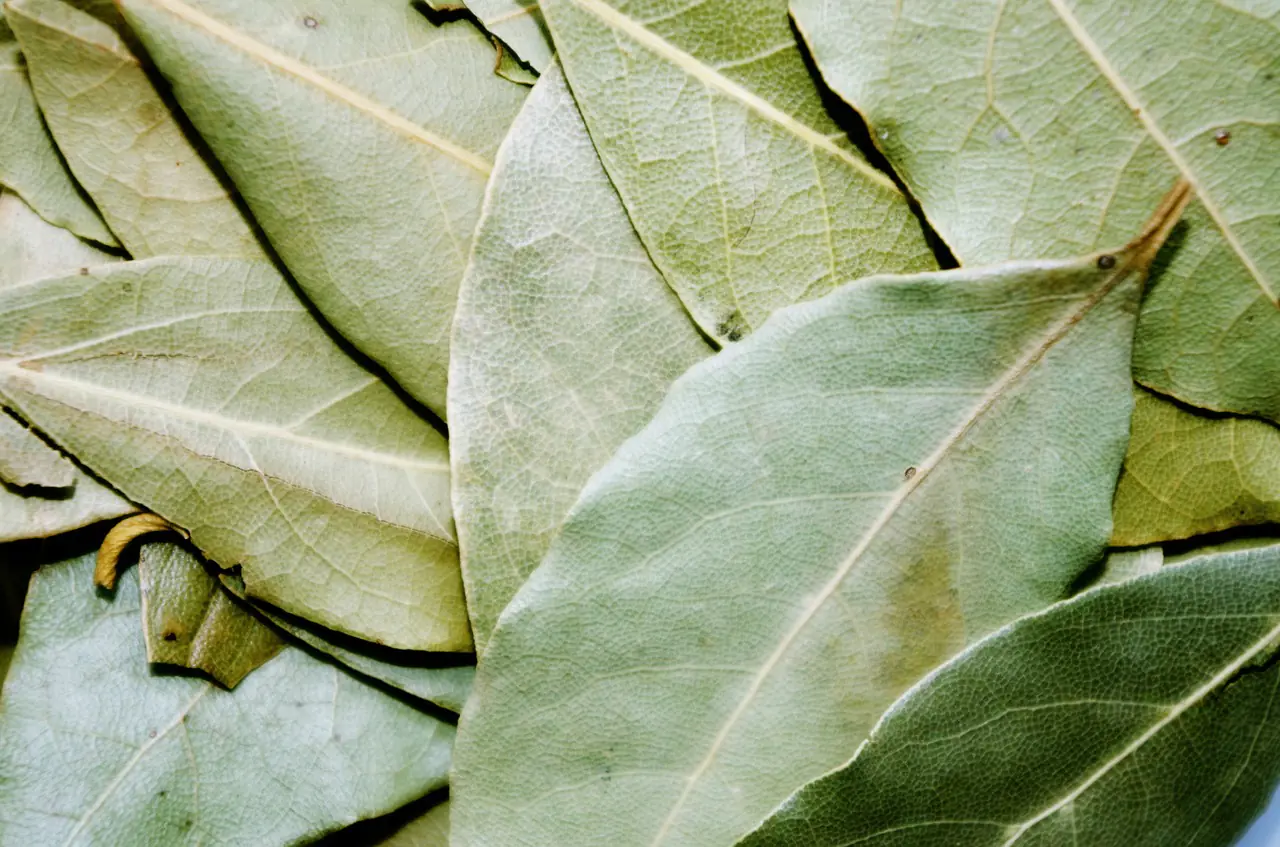
Treatment of prickly heat in children is possible at home and with the help of folk remedies. Babies under three should not take such drugs internally, but for external use for prickly heat, some formulations can be used to relieve rashes and itching even in a month-old baby. One such remedy is recommended by the famous pediatrician Komarovsky. This is a soda based recipe. Dissolve a small spoon of powder in 200 grams of water. Using a cotton pad, treat the affected areas several times a day. The doctor also advises letting the baby go without clothes more often in the summer heat.
Other home remedies for heat rash in children:
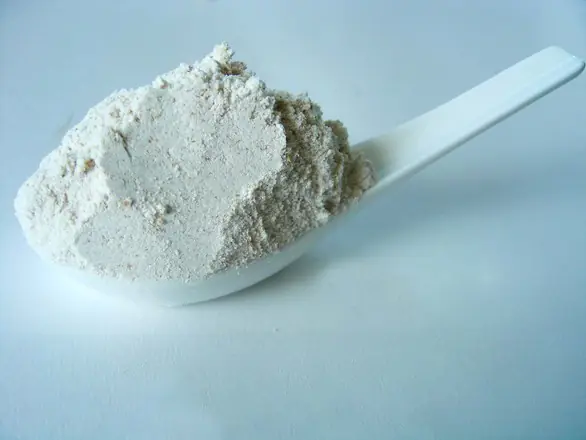
- Lavender milk baths. Dissolve two drops of lavender oil in 50 ml of milk and add to the bath.
- Starch baths. Dissolve three tablespoons of powder in 200 ml of water and pour into the bath.
- Laurel baths. Help prevent bacterial infection. You need to boil fifteen leaves for a quarter of an hour on a low flame, add the filtered decoction to the bath.
- Series-based baths. Steam four bags in a liter of boiling water, filter and pour into the bath. Allowed to be used for preventive purposes.
If any of these mixtures are diluted with a small amount of water, you can use them for rubdowns and compresses.
Sometimes, despite all the efforts of parents, it is not possible to cope with the disease. Then the pediatrician should give a referral to a pediatric dermatologist. There may be a bacterial infection, which is impossible to get rid of without the use of antibiotic pharmaceuticals.
Preventing heat rash in babies
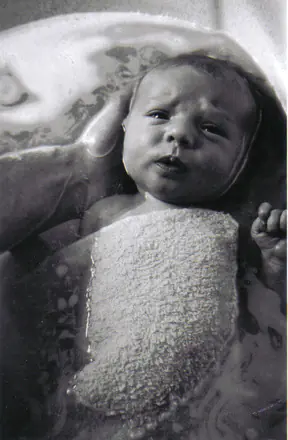
This disease can affect both adults and teenagers, but more often it affects infants. Is it possible to avoid heat rash? Yes, if you follow simple rules of prevention:
- Don't wrap up the baby! Even if he freezes a little, he will begin to move and warm up. The effects of overheating are much worse - it threatens not only the appearance of a rash, but also a decrease in immunity. You can determine that the baby is comfortable by touching the back of the neck. If it's warm, everything is fine. Hot - you need to take off some clothes. Cold - wear something warmer.
- When choosing clothes and bedding for your child, focus on natural materials. Synthetics prevent the skin from breathing.
- Change diapers regularly (up to eight times a day). They must fit in size. After each bowel movement, the baby should be washed and put on a fresh diaper. If you are prone to prickly heat, it is better to carry out the washing procedure even after the child has gone “little by little.” If it is impossible to wash the baby, use special wet wipes. Just not antibacterial - they may contain chemicals that can cause contact dermatitis.
- In hot weather, it is better if the baby spends most of the time without a diaper, in regular panties, or even without them at all.
- Maintain hygiene for newborns and older children. Bathing should become regular: in winter - once a day, in summer - up to three times, depending on the weather. You need to choose only hypoallergenic bathing products without dyes and fragrances. At the end of the procedure, it is useful to pour water over the baby, a couple of degrees lower than what was in the bath.
- Give your baby air baths. This is another way to harden and prevent rashes. Ventilate the room, undress the baby and leave him naked for 10 minutes. The procedure can be repeated twice a day, gradually increasing to 30 minutes.
- If your baby has a cold and is suffering from fever, be sure to wipe his body with a damp cloth to remove excess sweat.
- Use special detergents for washing baby clothes.
Don't forget to regularly check your child's skin for rashes.
As you can see, preventing breakouts is not that difficult. But if prickly heat does appear, there is no need to panic. If you get rid of provoking factors and start treatment on time, you can relieve unpleasant symptoms in a matter of days.
Remember that only a doctor can make a correct diagnosis. Be healthy!



